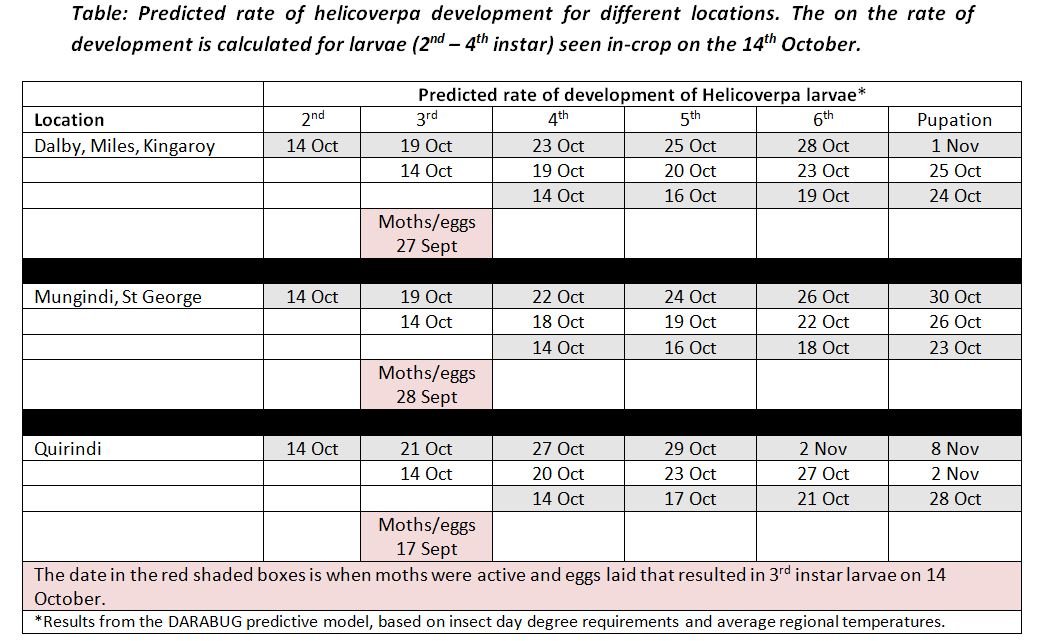As the early and moisture stressed crops finish up, and those that were under a storm kick on, it is challenging to try and estimate whether small helicoverpa larvae in the crop should be controlled, or whether the crop will finish up before they get to a damaging size.
There are a few things to keep in mind when making these decisions:
- Many of the very small-small larvae will die of natural causes, so populations of small larvae below or close to threshold are unlikely to exceed threshold by the time they reach damaging 4-5th instar. Death rates of very small and small helicoverpa larvae are very high. Larvae are easily dislodged by wind and rain, and can be eaten by predators. Loss of very small -small larvae is typically around 70%. In the chickpea threshold, we include a conservative loss of 30% of small larvae. Once you have 4th instar larvae (medium), there is very little natural mortality.
- Very small and small larvae feed predominantly on leaves, they cannot penetrate pods to feed on seed until they are at least 4th instar (medium). In a crop that is senescing quickly, the mortality of these small larvae will be added to by a lack of suitable food. You may still find these larvae in the greener patches of the crop, but consider what proportion of the crop is still green if considering the need to control these larvae.
- 80-90% of the damage to grain is done by 5-6th instar larvae, so you want to control the larvae before they reach 5th instar.
- The rate of larval growth is affected by temperature. The warmer the temperatures, the faster the larvae will grow. The estimates provided in the table below show the difference between a warmer location (e.g. Mungindi) and a cooler one (Quirindi). There is no difference in the development rates of H. armigera and H. punctigera.
- Withholding periods (WHP) for any of the products you consider using in crops as they finish up. Be sure to check whether the WHP applies to desiccation or harvest.

